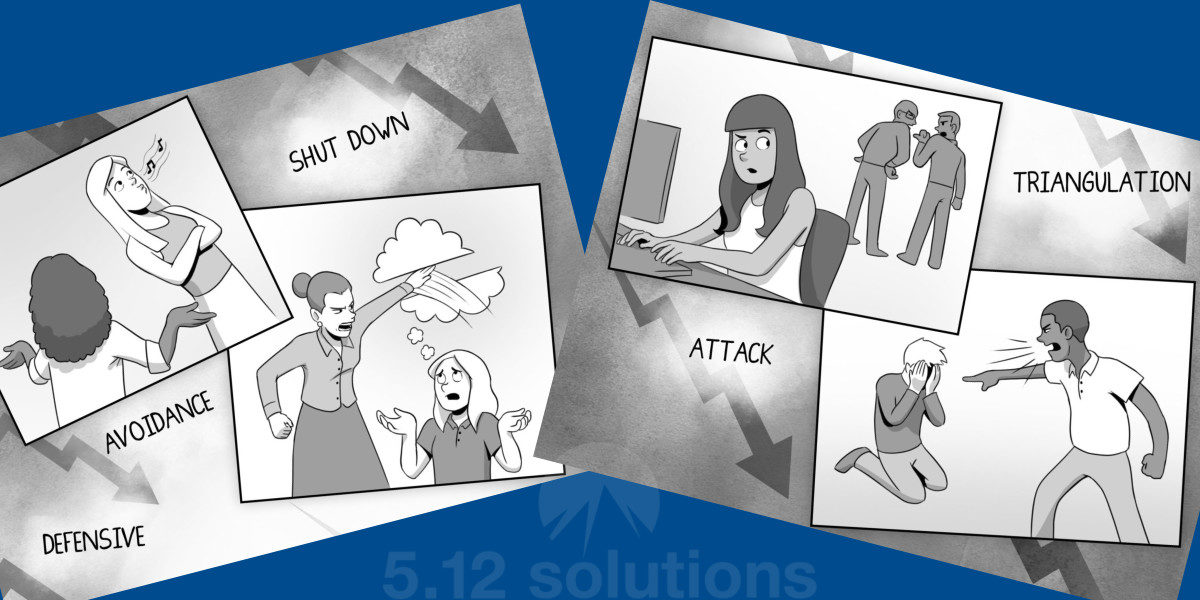I recently facilitated our Team Acceleration program with an executive team and discussed the critical topic of productive conflict. We were exploring how each team member approached conflict when one of the leaders said, “I never got in trouble for keeping my mouth shut.”
Ouch.
Not exactly the most effective approach to executive team leadership. In fact, it’s the opposite of what our organizations need most from leaders.
With the increasing complexity and unpredictability of our world today, we must draw upon other people’s insights, creativity, and innovative ideas.
What does this look like?
- A lot of dialogue and collaboration
- Constructive debate & problem-solving
- Being open to what other people have to say – especially when their point of view is different
The workplace of the future will rely on people from different teams to work together, experiment, and then adjust their approach based on what they learn.
To do that effectively, humans need to feel psychologically safe.
What is Psychological Safety?
Psychological safety measures interpersonal trust and respect among people at work that allows people to take social risks. Harvard organizational behavioral scientist Amy Edmondson first introduced the construct of “team psychological safety,” defining it as “a shared belief held by members of a team that the team is safe for interpersonal risk-taking.”
Edmondson clearly describes psychological safety as a belief that one will not be punished or humiliated for speaking up about ideas, questions, concerns, or mistakes. At some point in our careers, we’ve all seen or heard of people being punished or humiliated in the workplace.
It can be devastating to the person – as well as to the workplace culture. When people feel safe, creativity thrives. New ideas emerge. Safety allows people’s unique ideas and perspectives to shine through.
What Happens When People Don’t Feel Psychologically Safe?
Without physical and psychological safety, people become reluctant. They do things like:
- Defer to managers to solve problems for them
- Hesitate to raise tough issues or business challenges
- Use protective language out of fear of humiliation…
- Shut down as a way of managing what they say and how they say it
- Assess their manager’s mood before deciding to share the truth about the business
Issues simmer under the surface. Meetings occur after the meeting. Decisions are revisited over and over and over again. And on top of it all, people feel dissatisfied in their roles.
But with psychological safety, people are more willing to take social and interpersonal risks by:
- Expressing their opinions, even when those opinions are different from those of other people
- Sharing ideas instead of analyzing information
- Making decisions in the face of conflicting information
- Asking for cross-functional help when complexity arises
- Expanding their social networks in the workplace
- Admitting a mistake
- Offering an apology
So, how can leaders create a sense of psychological safety in the workplace? Stay tuned for my next blog – I’ll share 3 simple strategies you can use to prepare your workplace for the future, beginning today…
Meanwhile, I invite you to check out my latest book, The Deeply Human Workplace. It’ll take you on deeper dive into psychological safety, as well as 5 other skills to create a thriving workplace culture. Find the book on Amazon.com.
The book is a model for the 5.12 Team Acceleration program. Learn more about the program here, or schedule a complimentary Insight Session today.

